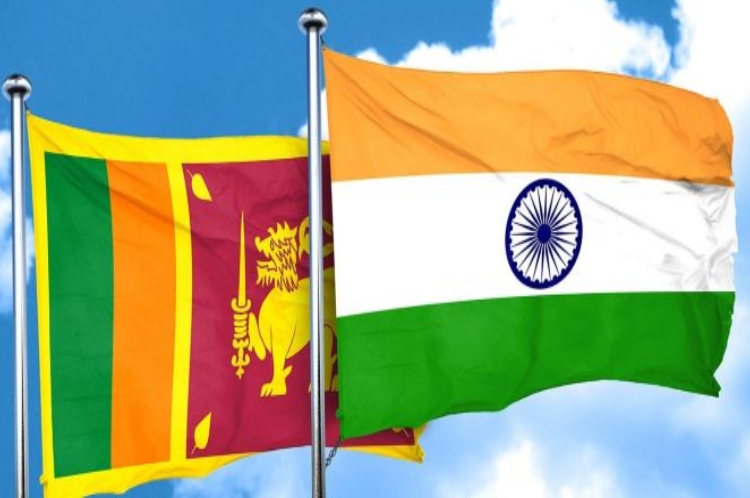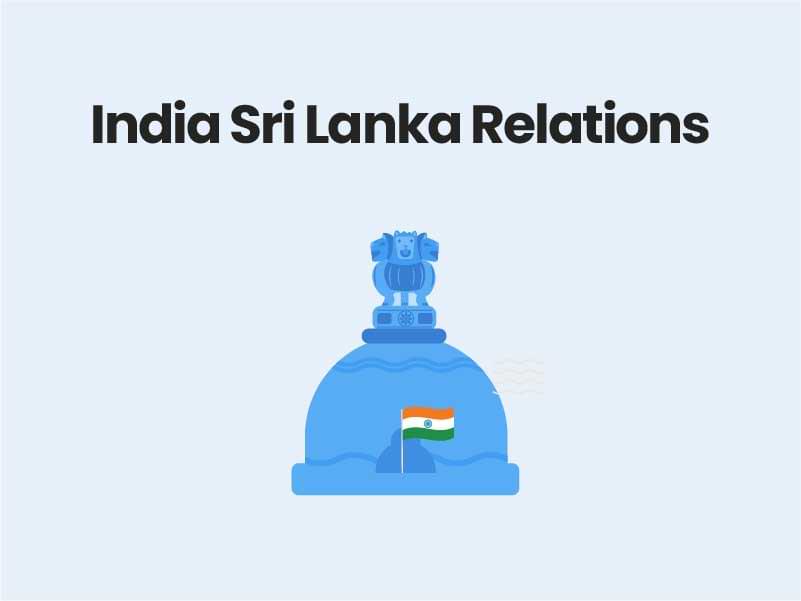Table of Contents

India-Sri Lanka Relations
The relationship between India and Sri Lanka is deeply rooted in a history that spans more than 2,500 years. Both countries share a legacy of intellectual, cultural, religious, and linguistic interaction. In recent years, the bilateral relationship has witnessed close contacts at all levels, leading to significant developments in various sectors. This brief provides an overview of the political, economic, cultural, and developmental aspects of India-Sri Lanka relations
Political Relations
India and Sri Lanka have maintained strong political relations marked by high-level exchanges and visits. Notable visits include:
- In 2018, Prime Minister Ranil Wickremesinghe paid an official visit to India.
- Former President and Leader of the Opposition, Mahinda Rajapaksa, visited New Delhi in 2018 and again in 2019.
- President Maithripala Sirisena made several visits to India, including one in 2015, 2016, and 2018.
- Prime Minister Narendra Modi visited Sri Lanka in 2015 and 2017 and made a solidarity visit in 2019 following the Easter Sunday terror attacks.
These visits reflect the importance of high-level engagement in strengthening the bilateral relationship.
Commercial Relations
Sri Lanka is one of India’s significant trading partners in the South Asian Association for Regional Cooperation (SAARC). Bilateral trade has grown substantially since the India-Sri Lanka Free Trade Agreement came into force in 2000. In 2018, bilateral trade amounted to $4.93 billion, with India exporting $4.16 billion worth of goods to Sri Lanka. Key exports from Sri Lanka to India include base oil, poultry feeds, and areca nuts, while imports from India include diesel, motorcycles, pharmaceutical products, and more. India is also a major investor in Sri Lanka, with investments in various sectors.
Development Cooperation
India has been actively involved in providing developmental assistance to Sri Lanka. This includes projects like the Indian Housing Project, which aimed to build 50,000 houses for war-affected and estate workers. India’s commitment to this project has been around $560 million in grants. Various other high-impact community development projects have been undertaken in education, health, transport connectivity, and more. India has also extended Lines of Credit to support infrastructure development and solar projects in Sri Lanka.
Cultural Relations
Cultural cooperation is an essential element of India-Sri Lanka relations. The Indian Cultural Centre in Colombo promotes Indian culture by offering classes in Indian music, dance, Hindi, and yoga. Events such as International Day of Yoga and exhibitions of sacred relics from Sarnath in Sri Lanka have further strengthened cultural ties. The India-Sri Lanka Foundation, established in 1998, facilitates cooperation in scientific, technical, educational, and cultural domains.
People-to-People Contact
To enhance people-to-people ties, India has offered scholarships to Sri Lankan students and provides opportunities for technical and professional training. In 2018, the first-ever pilgrimage to Bodh Gaya for Sri Lankan Armed Forces personnel and their families was organized, fostering deeper cultural and spiritual connections. Tourism plays a crucial role in people-to-people contact, with over 424,887 Indian tourists visiting Sri Lanka in 2018.
Fishermen Issue
Both countries have had issues with fishermen straying into each other’s territorial waters, especially in the Palk Straits and the Gulf of Mannar. Agreements and joint working groups have been established to address this problem, aiming to find a permanent solution and handle detentions of fishermen humanely.
Indian Community
Sri Lanka is home to a diverse Indian expatriate community, including People of Indian Origin (PIOs) and Indian Origin Tamils (IOTs). These communities are engaged in various businesses and contribute to the cultural diversity of the country. In summary, India-Sri Lanka relations are multifaceted and encompass political, economic, cultural, developmental, and people-to-people aspects. The two countries have a long history of cooperation and continue to work together to strengthen their ties in various domains.
Conclusion
India-Sri Lanka relations are a multifaceted tapestry of history, politics, economics, culture, and people-to-people connections. This enduring bond, spanning over two millennia, continues to evolve with close political exchanges and thriving trade. India’s substantial developmental assistance projects demonstrate its commitment to fostering prosperity in Sri Lanka. The vibrant cultural ties and growing people-to-people connections further enrich this relationship.
However, challenges like the fishermen issue highlight the need for practical solutions and continued cooperation. The Indian community in Sri Lanka, including PIOs and IOTs, adds diversity and strength to the cultural landscape. As India and Sri Lanka continue to navigate their relations, the shared history and common interests make them significant partners in the South Asian region.

One thought on “Discover the Surprising Secrets: India – Sri Lanka Relations Unveiled”